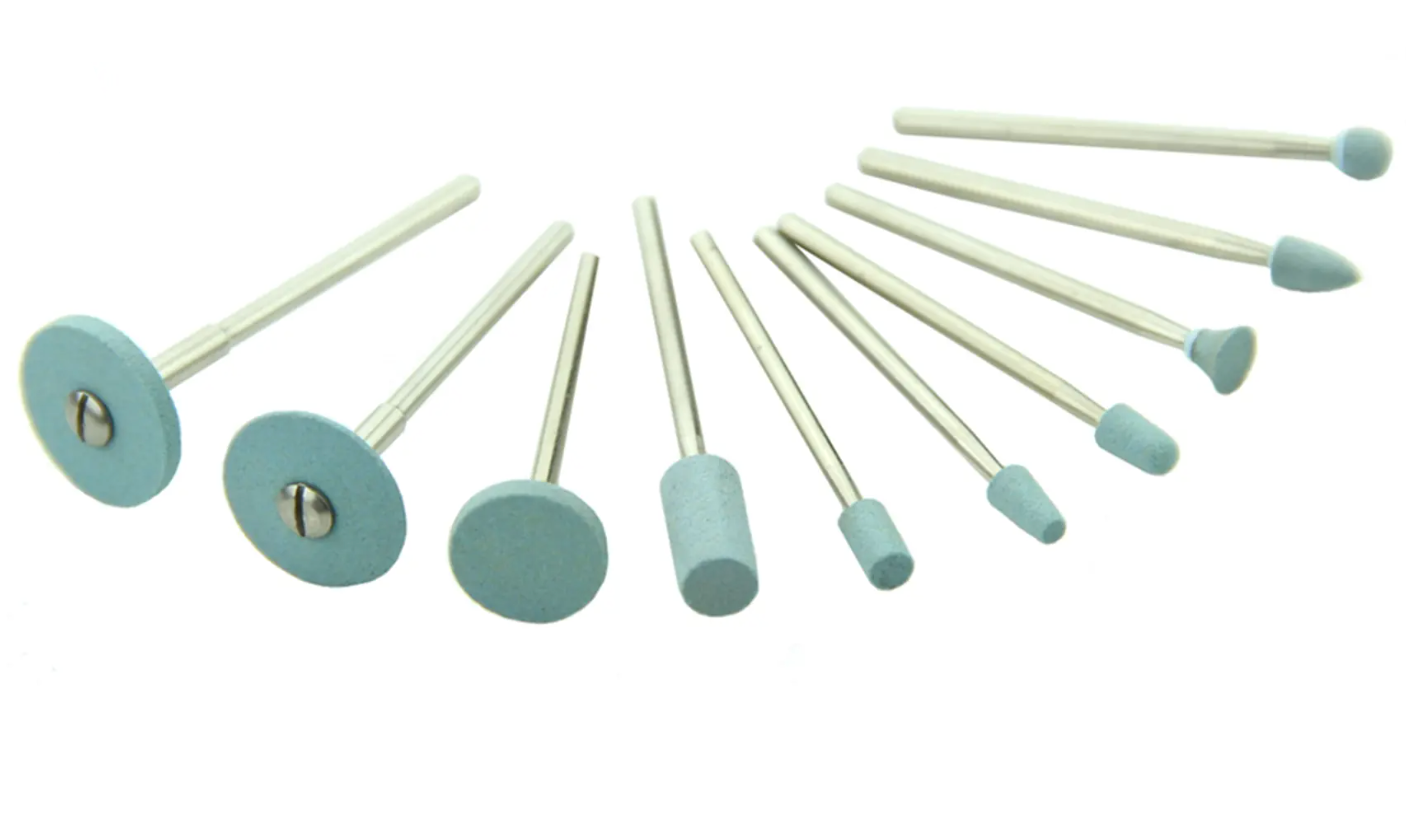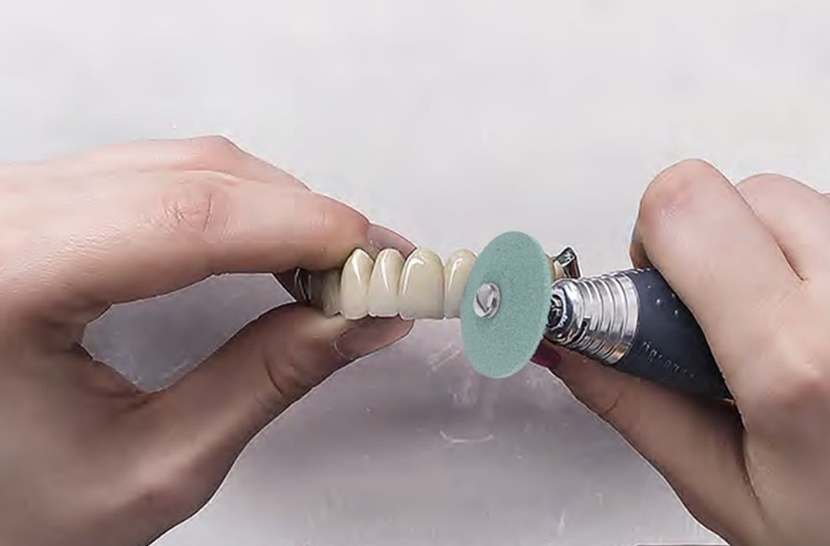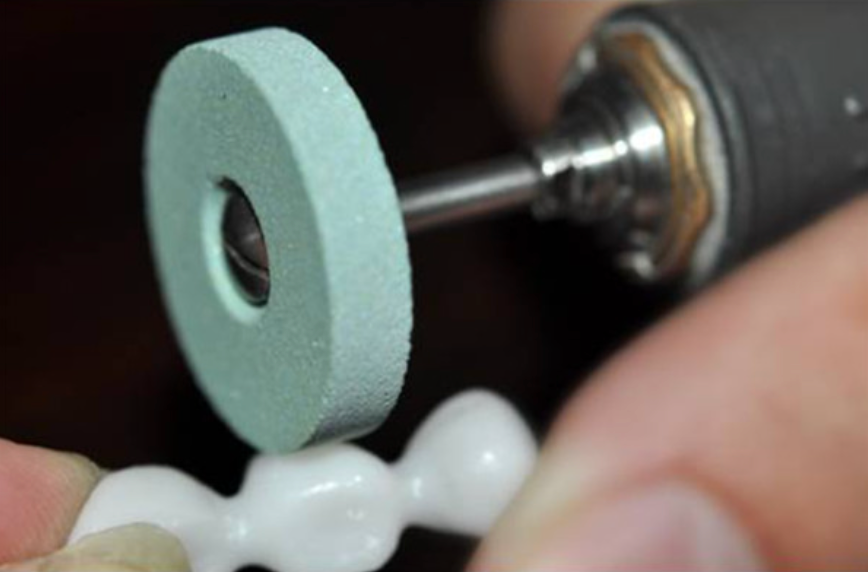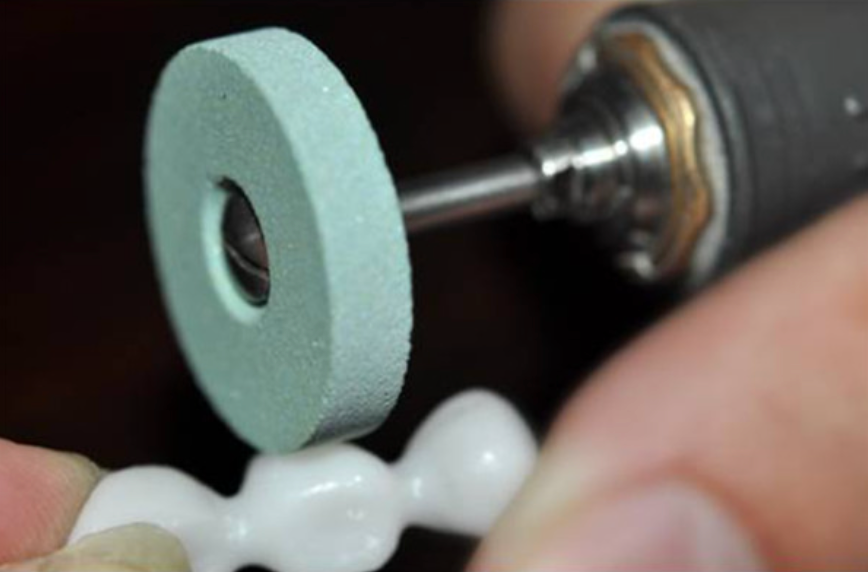Zirconia is a popular material used in dental restorations because of its strength, durability, and aesthetics. However, achieving a high polish on zirconia can be challenging, and using the wrong tools can result in subpar results. That's where diamond stones come in - they are the best choice for achieving a smooth and shiny finish on zirconia.
Choosing the right diamond stones for zirconia
Choosing the right diamond stones for zirconia requires considering several factors.

1.1 The Size of the Diamond Particles on the Stone
First and foremost, the size of the diamond particles on the stone is essential. For zirconia, it's best to choose a diamond stone with fine grit, as larger diamond particles can cause micro-fractures on the surface of the material.
1.2 The shape of the Diamond Stone
Additionally, the shape of the diamond stone is an important consideration when selecting a tool for zirconia polishing. The most common shapes for diamond stones used in zirconia polishing are cylindrical, conical, and tapered shapes. Tapered diamond stones are the most versatile option, as they can conform to the curved surfaces of the restoration and prevent chipping or cracking. Conical diamond stones are ideal for shaping and contouring, while cylindrical diamond stones work well for finishing and polishing flat surfaces.
1.3 The Type of Bond that the Diamond Particles Have with the Stone
The type of bond that the diamond particles have with the stone is also an essential consideration when selecting a diamond stone for zirconia polishing. Tapered diamond stones with a flexible bond are ideal for zirconia, as they can conform to the curved surfaces of the restoration and prevent chipping or cracking. Metal-bonded diamond stones are ideal for heavy grinding and shaping, while electroplated diamond stones are highly precise and produce a smooth finish but are less durable than resin or metal-bonded stones.
Proper Techniques and Tips of Using Diamond Stones on Zirconia
When using diamond stones on zirconia, it's essential to use proper techniques and tips to avoid damaging the material. It's crucial to use light pressure and to work in a slow and deliberate manner to prevent overheating the zirconia. Additionally, using water or a lubricating agent can help to reduce heat and friction and prevent micro-fractures on the surface of the material. It's also important to use a light touch when working on the edges of the restoration, as this area is particularly prone to chipping.

Maintaining and Cleaning Diamond Stones
Maintaining and cleaning diamond stones for zirconia is essential to ensure their longevity and effectiveness. After each use, it's important to clean the stones thoroughly with a brush and a cleaning solution to remove any debris or build-up. Additionally, storing the stones in a dry and cool place can help to prevent corrosion or damage to the diamond particles. When the stones become worn or damaged, they should be replaced to ensure optimal performance.
Advantages of Using Diamond Stones for Zirconia in Dental Restorations
Using diamond stones for zirconia in dental restorations offers several advantages. Diamond stones offer excellent precision and control, allowing for precise shaping and polishing of the restoration. They also produce a high-quality finish that is smooth and shiny, enhancing the overall aesthetics of the restoration. Diamond stones are also highly durable and can last for a long time with proper care and maintenance.

Conclusion
In conclusion, diamond stones are the best choice for achieving a smooth and shiny finish on zirconia in dental restorations. When choosing diamond stones, it's important to consider the size of the diamond particles, the shape of the stone, and the bond with the particles. Proper techniques and tips should be used when working with diamond stones on zirconia, such as using light pressure, working slowly, and using water or a lubricating agent. Maintaining and cleaning diamond stones is also crucial for their longevity and effectiveness. The advantages of using diamond stones for zirconia in dental restorations include excellent precision and control, high-quality finish, and durability. By following these best practices, dental professionals can achieve optimal results when working with zirconia.



